Micro-needling and Lasers 101: A Comprehensive Guide
Microneedling and lasers are two popular cosmetic procedures used to address various skin concerns. The treatments involve the use of either small needles or light energy to stimulate collagen production, which can result in smoother, more youthful-looking skin. However, with any medical procedure, there are risks involved, and it's important to understand the potential benefits and drawbacks before deciding to undergo treatment. In this blog post, we will delve into the basics of microneedling and laser treatments, as well as their respective risks and benefits, so you can make an informed decision about whether they are right for you.
Microneedling: Types, Pros, and Cons
Microneedling is a non-surgical procedure that has gained popularity in recent years for its effectiveness in improving skin texture and reducing the appearance of fine lines and wrinkles. The procedure works by causing controlled damage to the skin, which triggers the body's natural repair response. In this article, we will discuss the different types of microneedling, how it works, its benefits, and its potential drawbacks.
Types of Microneedling
There are different types of micro-needling, including:
-
Derma Rolling or Stamping
Derma rolling or stamping involves rolling a device with tiny needles over the skin to create microscopic punctures. This method is the most common and affordable form of microneedling, and it can be done at home with the use of a derma roller or stamp.
-
Radio Frequency (RF) Microneedling
RF micro-needling is a more advanced form of micro-needling that combines the benefits of traditional micro-needling with the added advantage of RF technology. The procedure involves using a device with tiny needles that emit radiofrequency energy to heat the skin's deeper layers, promoting collagen production and skin tightening.
How Does Microneedling Work?
Microneedling works by creating controlled damage to the skin, which stimulates the body's natural repair response. When the tiny needles puncture the skin's surface, the body produces more collagen and elastin, which help to plump and firm the skin. This increased collagen production can also help reduce the appearance of fine lines, wrinkles, and scars.
Pros of Microneedling
-
Improves Skin Texture: Microneedling can help improve skin texture by increasing collagen production, which can result in smoother, more youthful-looking skin.
-
Reduces Fine Lines and Wrinkles: Microneedling can reduce the appearance of fine lines and wrinkles by stimulating collagen production.
-
Minimally Invasive: Microneedling is a non-surgical procedure that involves minimal downtime and does not require anesthesia.
-
Versatile: Microneedling can be used on various body parts, including the face, neck, hands, and body.
General cons of Microneedling
- Prolonged Inflammation: Prolonged inflammation caused by incorrect use of the microneedling device or an unsterilized device can lead to bad scar tissue.
- Limited Results: While microneedling can improve skin texture and reduce the appearance of fine lines, it will not lift the face.
- Potential Side Effects: Microneedling can cause redness, swelling, and bruising, which can last for several days.
- It can cause facial fat loss if used incorrectly. The heat generated by the radio frequency energy can damage the fat cells in the face, leading to a loss of facial volume.
Cons of each type of micro-needling:
-
Derma Rolling:
- Uneven collagen induction: Due to the manual rolling of the device, it can be difficult to maintain an even depth of penetration, resulting in uneven stimulation of collagen production.
- Risk of infection: If the device is not sterilized properly, it can cause an infection in the skin.
- Hyperpigmentation: Derma rolling can lead to hyperpigmentation or darkening of the skin in some cases.
- Scarring: Incorrect use of the device or applying too much pressure can cause scarring or the formation of keloid scars.
-
Stamping:
- Risk of infection: If the device is not sterilized properly, it can cause an infection in the skin.
- Hyperpigmentation: Stamping can lead to hyperpigmentation or darkening of the skin in some cases.
- Scarring: Incorrect use of the device or applying too much pressure can cause scarring or the formation of keloid scars.
-
Radio Frequency Microneedling:
- Expensive: RF microneedling devices tend to be more expensive than other types of microneedling devices.
- Painful: RF microneedling can be more painful than other types of microneedling due to the heat generated by the radio frequency energy.
- Risk of infection: If the device is not sterilized properly, it can cause an infection in the skin.
- Hyperpigmentation: RF microneedling can lead to hyperpigmentation or darkening of the skin in some cases.
- Scarring: Incorrect use of the device or applying too much pressure can cause scarring or the formation of keloid scars.
- Uneven collagen induction: It can be difficult to maintain an even depth of penetration with RF microneedling, resulting in uneven stimulation of collagen production.
- Facial fat loss: If the device is used too aggressively or at too high a temperature, it can lead to facial fat loss.
Tips for Safe Microneedling
If you're considering microneedling, here are some tips to ensure safe and effective treatment:
-
Use sterile and approved products: Only use sterile and approved products to prevent infection and other adverse effects.
-
Infuse Growth Factors and Exosomes: Adding growth factors and exosomes can aid healing and improve the results of the procedure.
-
Don't overuse the device: Microneedling should be done once a month or every two months to allow the skin to heal properly.
- Find a professional that has performed hundreds of procedures and knows how to handle issues that arise.
My Final thoughts on Micro-needling:
I highly recommend avoiding performing micro-needling procedures at home. Many people have caused irreversible damage to their faces by attempting to perform these treatments themselves.
To ensure that you receive the best possible results, it is important to seek out a trained professional who has successfully treated hundreds of patients. Prior to undergoing treatment, it is important to ask your provider questions regarding the potential side effects and how they have corrected them in the past. Microneedling is a skilled technique that requires proper training, experience, and sterile equipment, so it is crucial to entrust your skin to someone who is knowledgeable and qualified in the procedure.
Anti-Aging Laser Treatments: Types, Pros, and Cons
As we age, our skin naturally loses collagen and elasticity, resulting in fine lines, wrinkles, and sagging. Fortunately, there are a variety of anti-aging lasers available to help restore a more youthful appearance to the skin. These lasers work by stimulating collagen production and targeting specific areas of concern, such as sun damage, age spots, and scars.
I will discuss the most common anti-aging lasers, including their definitions, uses, pros and cons, success rates, compatibility with darker skin tones and sensitive skin, and expected results.
Ablative Lasers:
Ablative lasers are a type of laser that remove or ablate tissue by vaporizing it. There are several types of ablative lasers, including:
-
Fractional CO2 Laser:
Definition: Fractional CO2 Laser is a type of laser therapy that uses carbon dioxide to vaporize tiny areas of skin. The treatment creates thousands of microscopic holes in the skin, triggering the body's natural healing process to generate new collagen and elastin fibers, which help to reduce wrinkles, fine lines, and other signs of aging.
Uses: Fractional CO2 Laser can be used to treat a wide range of skin conditions, including wrinkles, fine lines, scars, sun damage, and age spots.
Pros: This type of laser is highly effective at reducing the signs of aging and can produce dramatic results in just one treatment. The treatment is minimally invasive and requires little downtime.
Cons: Fractional CO2 Laser can cause redness, swelling, and discomfort after the procedure. Patients may also experience some temporary changes in skin pigmentation.
Success Rates: Fractional CO2 Laser has a high success rate, with many patients seeing noticeable improvements in skin texture, tone, and overall appearance after just one treatment.
Compatibility with Darker Skin Tones: Fractional CO2 Laser may not be suitable for individuals with darker skin tones as it can cause hyperpigmentation or hypopigmentation.
Compatibility with Sensitive Skin: Fractional CO2 Laser can cause redness, swelling, and discomfort after the procedure, which may be more pronounced in patients with sensitive skin.
Expected Results: Fractional CO2 Laser can produce dramatic results in just one treatment, including a reduction in wrinkles, fine lines, scars, sun damage, and age spots. The treatment can also improve skin texture and tone.
Average Cost and Downtime: The average cost per session for AFCDL was $2,509 in 2020. Patients typically need 1-3 sessions to see results, with downtime ranging from 7-14 days.
-
Erbium Laser:
Definition: Erbium Laser is a type of laser therapy that uses a high-intensity beam of light to remove the top layer of skin. The treatment helps to reduce wrinkles, fine lines, and other signs of aging by stimulating the production of new collagen and elastin fibers.
Uses: Erbium Laser is commonly used to treat wrinkles, fine lines, and other signs of aging. It can also be used to remove scars, sun damage, and age spots.
Pros: Erbium Laser is less aggressive than other types of laser treatments, making it a good option for patients with sensitive skin. The treatment produces minimal discomfort and requires little downtime.
Cons: Erbium Laser is less effective at reducing the signs of aging than other types of laser treatments. It may require multiple treatments to achieve desired results.
Compatibility with Darker Skin Tones: Erbium Laser is less likely to cause hyperpigmentation or hypopigmentation than other types of laser treatments, making it an option for individuals with darker skin tones, however, non-ablative lasers are far safer options as discussed later in this blog.
Compatibility with Sensitive Skin: Erbium Laser is less aggressive than Fractional CO2 Laser, which makes it more tolerable bay sensitive skin types, but non-ablative lasers are far more compatible with sensitive skin.
Expected Results: Erbium Laser can help to reduce the signs of aging, including wrinkles, fine lines, scars, sun damage, and age spots. Patients may see noticeable improvements in skin texture and tone after multiple treatments.
Average Cost and Downtime: The average cost per session for Erbium laser is $2300. Patients may require 1-3 treatments with downtime ranging from a few days to a week
Non-Ablative Lasers:
Non-ablative lasers are a type of laser treatment that target the underlying layers of skin without damaging the surface. These lasers work by delivering heat energy to the deeper layers of skin, which stimulates collagen production and encourages skin tightening and rejuvenation. Unlike ablative lasers, non-ablative lasers do not remove any layers of skin, making them a less invasive and less painful option for some patients. Non-ablative lasers are commonly used to treat fine lines and wrinkles, acne scars, age spots, and other signs of aging or skin damage. However, because they are less invasive, multiple treatments may be required to achieve desired results.
-
IPL (Intense Pulsed Light) Laser:
Definition: IPL (Intense Pulsed Light) Laser is a type of laser therapy that uses intense pulses of light to penetrate the skin and stimulate collagen production. The treatment can help to reduce wrinkles, fine lines, and other signs of aging.
Uses: IPL Laser is commonly used to treat wrinkles, fine lines, and other signs of aging. It can also be used to remove scars, sun damage, and age spots.
Pros: IPL Laser is a non-invasive treatment that produces minimal discomfort and requires little downtime. It can produce noticeable results after just one treatment.
Cons: IPL Laser is less effective than other types of laser treatments at reducing the signs of aging. It may require multiple treatments to achieve desired results.
Success Rates: IPL Laser has a moderate success rate, with patients typically requiring multiple treatments to achieve desired results.
Compatibility with Darker Skin Tones: IPL Laser may not be suitable for individuals with darker skin tones as it can cause hyperpigmentation or hypopigmentation.
Compatibility with Sensitive Skin: IPL Laser is a non-invasive treatment that produces minimal discomfort and is generally well-tolerated by patients with sensitive skin.
Expected Results: IPL Laser can help to reduce the signs of aging, including wrinkles, fine lines, scars, sun damage, and age spots. Patients may see noticeable improvements in skin texture and tone after multiple treatments.
Average Cost and Downtime: The average cost per session for IPL laser is $300-$600 per session. Patients typically require 3-6 treatments to see results, with minimal to no downtime.
2. Fraxel Laser:
Definition: Fraxel Laser is a type of laser therapy that uses a high-intensity beam of light to penetrate the skin and stimulate collagen production. The treatment can help to reduce wrinkles, fine lines, and resurface the skin.
Uses: Fraxel laser is commonly used to treat a variety of skin concerns, including fine lines, wrinkles, acne scars, sun damage, and age spots. It can also improve overall skin texture and tone.
Pros: Fraxel laser has a high success rate, with patients typically seeing noticeable improvements in skin texture, tone, and overall appearance after multiple treatments. The treatment is highly precise, allowing for customized treatment to specific areas of concern. Fraxel laser is a non-invasive treatment that requires little to no downtime, making it a convenient option for those with busy lifestyles.
Cons: Fraxel laser can cause discomfort during the treatment, including a stinging or burning sensation. However, most patients find the discomfort to be manageable. The treatment can also cause redness, swelling, and flaking after the treatment, which may last for several days to a week. Fraxel laser may not be suitable for individuals with darker skin tones as it can cause hyperpigmentation or hypopigmentation. It is important to consider these potential side effects and limitations before deciding if Fraxel laser is the right treatment option for you.
Success Rates: Fraxel Laser has a high success rate, with patients typically seeing noticeable improvements in skin texture, tone, and overall appearance after multiple treatments.
Compatibility with Darker Skin Tones: Fraxel Laser may not be suitable for individuals with darker skin tones as it can cause hyperpigmentation or hypopigmentation.
Compatibility with Sensitive Skin: Fraxel Laser can cause redness, swelling, and discomfort after the procedure, which may be more pronounced in patients with sensitive skin.
Expected Results: Fraxel Laser can help to reduce the signs of aging, including wrinkles, fine lines, scars, sun damage, and age spots.
Average Cost and Downtime: The average cost per session for Fraxel laser is $1300. Patients may require 3-5 treatments to see results, with downtime ranging from a few days to a week.
Fraxel laser can help to reduce the signs of aging, including wrinkles, fine lines, scars, sun damage, and age spots. Patients may see noticeable improvements in skin texture and tone after multiple treatments. It is important to note that results may vary depending on the individual and the severity of their skin concerns. It is recommended to work with a qualified dermatologist or aesthetician to determine if Fraxel laser is the right treatment option and to discuss expected results based on your individual skin concerns.
-
Nd:YAG Laser:
Definition: Nd:YAG Laser is a type of laser therapy that uses a high-intensity beam of light to penetrate the skin and stimulate collagen production. The treatment can help to reduce wrinkles, fine lines, and other signs of aging.
Uses: Nd:YAG Laser is commonly used to treat wrinkles, fine lines, and other signs of aging. It can also be used to remove scars, sun damage, and age spots.
Pros: Nd:YAG Laser is a versatile treatment that can be used on a wide range of skin types. It produces minimal discomfort and requires little downtime.
Cons: Nd:YAG Laser is less effective than other types of laser treatments at reducing the signs of aging. It may require multiple treatments to achieve desired results.
Success Rates: Nd:YAG Laser has a moderate success rate, with patients typically requiring multiple treatments to achieve desired results.
Compatibility with Darker Skin Tones: Nd:YAG Laser is a versatile treatment that can be used on a wide range of skin types, including darker skin tones.
Compatibility with Sensitive Skin: Nd:YAG Laser is a non-invasive treatment that produces minimal discomfort and is generally well-tolerated by patients with sensitive skin.
Expected Results: Nd:YAG Laser can help to reduce the signs of aging, including wrinkles, fine lines, scars, sun damage, and age spots. Patients may see noticeable improvements in skin texture and tone after multiple treatments.
Average Cost and Downtime: The average cost per session for Nd:YAG laser is $300. Patients may require multiple treatments to see results, with minimal to no downtime.4. BBL (BroadBand Light)
Definition: BBL is a type of non-ablative laser that uses intense pulsed light (IPL) to treat a variety of skin concerns, including hyperpigmentation, sun damage, acne, and fine lines. BBL is a versatile treatment that can be customized to meet the unique needs of each patient.
Uses: The BBL laser works by emitting short pulses of high-intensity light into the skin. This light is absorbed by the targeted areas, which stimulates collagen production and promotes the growth of new skin cells. BBL can be used to treat a wide range of skin concerns, including sun spots, age spots, freckles, rosacea, and acne.
Pros: One of the main advantages of BBL laser treatment is that it is non-invasive and requires no downtime. Patients can return to their regular activities immediately after treatment. In addition, BBL is safe and effective for all skin types, including darker skin tones.
Cons: There are also some potential drawbacks to BBL treatment. Some patients may experience mild redness, swelling, or bruising after treatment, although these side effects typically resolve within a few hours to a few days. In rare cases, patients may experience burns, scarring, or changes in skin pigmentation.
Success rates of BBL laser treatment vary depending on the individual patient and the specific skin concern being treated. In general, multiple treatments may be required to achieve desired results. Patients can expect to see improvement in skin texture, tone, and clarity, as well as a reduction in the appearance of fine lines, wrinkles, and other signs of aging.
Compatibility with Darker Skin: BBL (BroadBand Light) laser treatment is considered safe and effective for all skin types, including darker skin tones. Unlike other laser treatments that may target melanin, BBL uses a broad spectrum of light to target various skin concerns, including hyperpigmentation, sun damage, and fine lines.
Compatibility with Sensitive Skin: BBL laser treatment is also suitable for sensitive skin types as it is non-invasive and does not require any downtime. Patients may experience mild redness or swelling after treatment, but this typically resolves within a few hours to a few days.
The expected results of BBL treatment depend on the individual patient and the specific skin concern being addressed. However, patients can generally expect to see improvement in skin texture, tone, and clarity, as well as a reduction in the appearance of fine lines, wrinkles, and other signs of aging.
Average Cost and Downtime: The average cost per session for BBL is $400. Patients typically require multiple treatments to see results, with minimal to no downtime.
BBL treatment typically requires a series of sessions spaced several weeks apart to achieve optimal results. The number of sessions required will vary depending on the individual patient and the specific skin concern being treated.
BBL laser treatment is a safe and effective option for treating a variety of skin concerns. Its non-invasive nature and compatibility with all skin types make it a popular choice among patients. However, as with any cosmetic procedure, it is important to consult with a qualified dermatologist or aesthetician to determine the best treatment plan for individual needs and concerns.
My Final Thoughts on Lasers:
When it comes to safety for dark and sensitive skin, there is a clear distinction between ablative and non-ablative lasers. Ablative lasers, such as the Fractional CO2 laser and Erbium laser, remove layers of skin and therefore pose a greater risk of hyperpigmentation and scarring for dark and sensitive skin. Non-ablative lasers, on the other hand, target the deeper layers of skin without removing the top layers, making them a safer option for darker and more sensitive skin types.
Among the non-ablative lasers, the Nd:YAG laser is considered the safest for darker skin types, as it can selectively target melanin without damaging the surrounding tissue. IPL (Intense Pulsed Light) laser and BBL (BroadBand Light) are also safe for darker skin tones, but caution must be taken to avoid overheating the skin. Fraxel laser is another non-ablative option that can be safe for darker skin, but it is important to use a lower setting and to perform a test patch first.
Conclusion:
Microneedling is an effective and minimally invasive procedure that can help improve skin texture and reduce the appearance of fine lines and wrinkles. However, like any procedure, it is essential to use the device correctly and follow safety guidelines to avoid any potential side effects. Be sure to consult with a licensed skincare professional to determine the best microneedling procedure for you.
While ablative lasers can offer more dramatic results, they are not always the safest option for dark and sensitive skin types. Non-ablative lasers, such as the Nd:YAG laser, IPL laser, BBL, and Fraxel laser, offer a safer alternative for those with darker or more sensitive skin. It is always important to consult with a qualified and experienced practitioner before undergoing any laser treatment to ensure the best possible outcome.
Ultimately, the best laser for anti-aging treatments will depend on an individual's skin type, concerns, and goals. It is important to consult with a qualified dermatologist or aesthetician to determine the most appropriate treatment plan. While lasers can be highly effective for reducing the signs of aging, it is also important to maintain a healthy lifestyle, including a balanced diet, regular exercise, and sun protection, to support overall skin health and vitality.
As always, be well, be safe, be beautiful!
References:
-
Alam M, et al. Microneedling: a review and practical guide. Dermatol Surg. 2018;44(3):397-404. doi:10.1097/DSS.0000000000001265
-
Fabbrocini G, et al. Microneedling for the treatment of acne scars in Fitzpatrick skin types III to VI: a quantitative and qualitative evaluation. J Cosmet Dermatol. 2019;18(6):1855-1860. doi:10.1111/jocd.13093
-
Lee JW, et al. The efficacy of microneedling plus human stem cell conditioned medium for skin rejuvenation: a randomized, controlled, blinded split-face study. Ann Dermatol. 2014;26(5):584-591. doi:10.5021/ad.2014.26.5.584
-
Kwon HH, et al. Comparison of two different types of radiofrequency microneedling for treating acne vulgaris: a split-face study. J Cosmet Dermatol. 2021;20(9):2646-2652. doi:10.1111/jocd.14560
-
Aust MC, et al. Percutaneous collagen induction therapy: an alternative treatment for scars, wrinkles, and skin laxity. Plast Reconstr Surg. 2008;121(4):1421-1429. doi:10.1097/01.prs.0000304612.72899.03
-
Kim HJ, et al. The effect of microneedling on the skin's physical properties: a quantitative evaluation. Acta Derm Venereol. 2014;94(3):317-321. doi:10.2340/00015555-1732
-
Singh A, Yadav S. Microneedling: Advances and widening horizons. Indian Dermatol Online J. 2016;7(4):244-254. doi:10.4103/2229-5178.185468
-
Sundaram H, et al. Safety and effectiveness of micro-focused ultrasound with visualization and integrated bipolar radiofrequency for treating wrinkles and laxity of the lower face. Dermatol Surg. 2015;41 Suppl 1:S112-S120. doi:10.1097/DSS.0000000000000275
-
Doghaim NN, et al. Comparison of fractional radiofrequency microneedling and intense pulsed light for the treatment of melasma: a randomized controlled split-face trial. Dermatol Surg. 2021;47(5):728-734. doi:10.1097/DSS.0000000000002823
-
Soltani-Arabshahi R, et al. Adverse reactions to cosmetic procedures: a retrospective study. Int J Dermatol. 2014;53(12):1490-1493. doi:10.1111/ijd.12631
-
Shim EK, et al. Microneedle fractional radiofrequency treatment for periorbital wrinkles: a randomized controlled trial. Arch Dermatol. 2011;147(11):1329-1336. doi:10.1001/archdermatol.2011.308
-
Park KY, et al. Fractional microneedling radiofrequency therapy for treatment of acne scars: a systematic review and meta-analysis. J Dermatolog Treat. 2021;32(4):393-400.
-
Shamban, A. T. (2013). Laser treatments for aging skin. Clinics in dermatology, 31(6), 725-735.
-
Gold, M. H. (2013). Update on lasers and light sources for aging skin. Seminars in cutaneous medicine and surgery, 32(2), 72-78.
-
Geronemus, R. G. (2008). Fractional photothermolysis: current and future applications. Lasers in surgery and medicine, 40(2), 96-107.
-
Alexiades-Armenakas, M. R. (2008). Laser-mediated photorejuvenation. Clinics in plastic surgery, 35(1), 131-141.
-
Ross, E. V., & Kim, K. M. (2010). Laser treatment for rejuvenation and resurfacing. Facial plastic surgery clinics, 18(1), 63-76.
-
Kim, K. M., & Geronemus, R. G. (2013). Laser and light sources for the treatment of aging skin. Clinics in plastic surgery, 40(2), 201-210.
-
Tierney, E. P., Hanke, C. W., & Kriegel, D. A. (2014). Overview of laser skin resurfacing. Clinics in plastic surgery, 41(1), 1-13.
-
Narurkar, V. A., & Fabi, S. G. (2012). Fractional laser skin resurfacing. Facial plastic surgery clinics, 20(1), 17-28.
-
Orringer, J. S., Rittié, L., Baker, D., Voorhees, J. J., & Fisher, G. J. (2013). Molecular mechanisms of nonablative fractionated laser resurfacing. Br J Dermatol, 169(5), 1150-1156.
-
Wu, D. C., Goldman, M. P., & Weiss, R. A. (2012). Laser resurfacing and rejuvenation. Plastic and reconstructive surgery, 129(1), 101e-114e.
Disclaimer:
All my recommendations are based on my own research and personal trust in the products that I share. I am not a doctor or nutritionist. Please consult with your practitioner prior to using any products recommended.
As a blogger, my content may include affiliate links from advertisers. I may earn a small commission from actions readers take on these links such as a purchase, or subscription. Please use my links if you like my recommendations. This helps support the hundreds of hours my team and I invest in research and finding the healthiest beauty and wellness options for consumers. We appreciate your support!


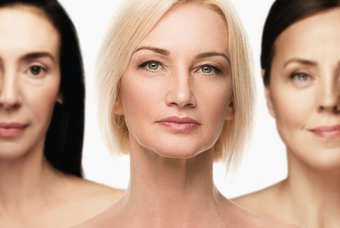



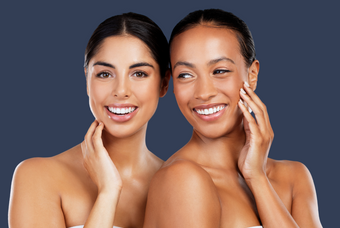
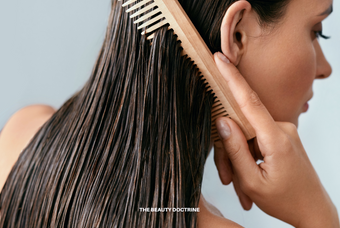
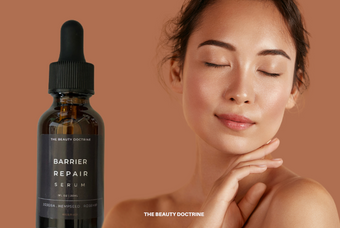
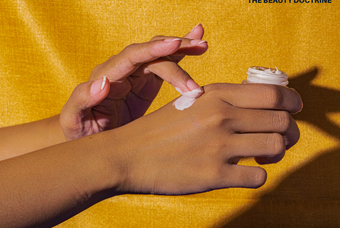


FIBROIDS IS CURABLE WITHOUT SURGERY! I say so because i once surfer fibroid and I got cured by doctor Uduehi without surgery. I’m a mother now, no miscarriage, no pain and I’ve not had any symptoms or sign of fibroid ever since I got cured. Thank you doctor, you can reach him through: uduehiherbalcare@gmail.com and +234 706 647 4917